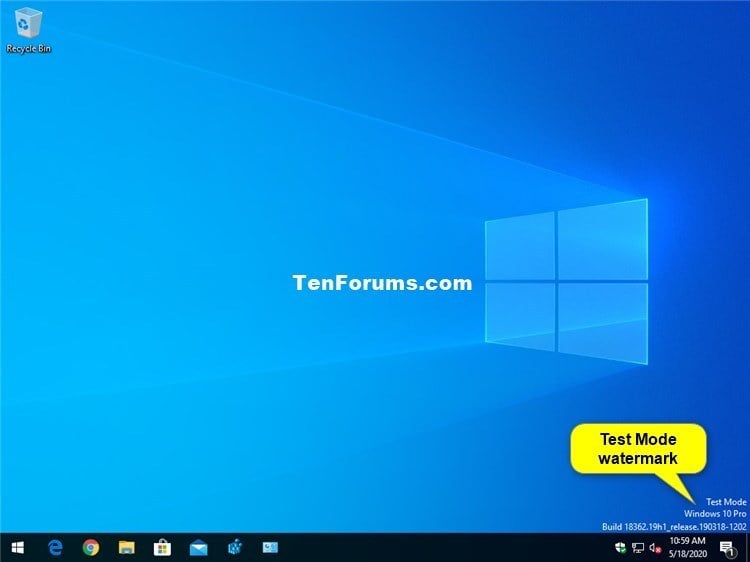64-bit versions of Windows 10 and 8 include a “driver signature enforcement” feature. They’ll only load drivers that have been signed by Microsoft. To install less-than-official drivers, old unsigned drivers, or drivers you’re developing yourself, you’ll need to disable driver signature enforcement.
With Windows 10’s Anniversary Update, Microsoft tightened the screws even further. But you can avoid the more restrictive driver-signing requirements by disabling Secure Boot.
Go to Start Menu and go to 'All Programs', then 'Accessories', right click your mouse on 'Command Prompt' and 'Run as administrator', as shown below —. Disable Driver Signature Enforcement. Now type the code in cmd and hit enter — bcdedit.exe -set loadoptions DISABLEINTEGRITYCHECKS. Driver signing enforcement ensures that only drivers that have been sent to Microsoft for signing will load into the Windows kernel. This prevents malware from burrowing its way into the Windows kernel. Disable driver signing and you’ll be able to install drivers that weren’t officially signed. Be sure you know what you’re doing! DISABLE DRIVER SIGNATURE ENFORCEMENT IN WINDOWS 8 and 8.1 Hold the Win + C key. Click on settings (The gear icon). Click on Pc settings. On windows 8 computer, click on General Under Advance Startup Restart now. On windows 8.1 computer, from Pc Settings, scroll down and click on Update &.
Driver Signature Enforcement Is a Security Feature
Before you begin, keep in mind: Microsoft isn’t just trying to make your life harder here. Driver signing enforcement ensures that only drivers that have been sent to Microsoft for signing will load into the Windows kernel. This prevents malware from burrowing its way into the Windows kernel.
Disable driver signing and you’ll be able to install drivers that weren’t officially signed. Be sure you know what you’re doing! You should only install drivers you trust.
Option One: Enable Test Signing Mode
Windows includes a “Test Mode” or “Test Signing” Mode feature. Enable this mode and driver signature enforcement will be disabled until you choose to leave Test Mode. You’ll see a “Test Mode” watermark appear at the bottom right corner of your desktop near your clock, informing you that Test Mode is enabled.
You’ll need to run a command from an Administrator Command Prompt to do this. To launch one, right-click the Start button or press Windows+X and select “Command Prompt (Admin)”.
Paste the following command into the Command Prompt window and press Enter:

If you see a message saying the value is “protected by Secure Boot policy”, that means Secure Boot is enabled in your computer’s UEFI firmware. You’ll need to disable Secure Boot in your computer’s UEFI firmware (also known as its BIOS) to enable test signing mode.
Restart your computer to enter test mode. You’ll see the “Test Mode” watermark appear at the bottom right corner of your desktop and you’ll be free to install whatever unsigned drivers you want.


To leave test mode, open a Command Prompt window as Administrator once again and run the following command:
Option Two: Use an Advanced Boot Option
There’s also another way to do this. You can use the advanced boot options menu to boot Windows 10 with driver signature enforcement disabled. This isn’t a permanent configuration change. The next time you restart Windows, it will boot with driver signature enforcement enabled—unless you go through this menu again.
To do this, get to the Windows 8 or 10 advanced boot options menu. For example, you can hold down the Shift key while you click the “Restart” option in Windows. Your computer will restart into the menu.
Select the “Troubleshoot” tile on the Choose an option screen that appears.
Select “Advanced options”.

Driver Signature Enforcement Overrider Tool
Click the “Startup Settings” tile.
Click the “Restart” button to restart your PC into the Startup Settings screen.
Type “7” or “F7” at the Startup Settings screen to activate the “Disable driver signature enforcement” option.

Windows 10 Driver Signature Override
Your PC will boot with driver signature enforcement disabled and you’ll be able to install unsigned drivers. However, the next time you restart your computer, driver signature enforcement will be disabled—unless you go through this menu again. You’re now free to install drivers that haven’t been officially signed by Microsoft.
Original Post Link: https://www.howtogeek.com/167723/how-to-disable-driver-signature-verification-on-64-bit-windows-8.1-so-that-you-can-install-unsigned-drivers/
If you are a driver developer or if any of your Windows drivers are not signed, you might need to disable the driver signature requirement in Windows 10. Another example is if you need to flash an Android phone or install some old or specific hardware drivers, you need to bypass this requirement as well. But Windows 10 won't allow you to install those unsigned drivers. Here is what you should do in such a case.
To install unsigned drivers, you need to disable the driver signature requirement in Windows 10. This can be done as follows.
- Reboot into Advanced Startup options. For reference, see these articles:
- Boot Windows 10 into Advanced Startup Options quickly.
- Make shortcut to Advanced Startup options in Windows 10.
- In Advanced Startup options screen, click Troubleshoot:
- In Troubleshoot, click Advanced options:
- In Advanced options, select the item Startup settings:
- Finally, press the Restart button in Startup settings:
After Windows 10 restarts, you will see the following screen:
It allows you to disable the driver signature enforcement. You need to press F7 to activate the item 'Disable driver signature enforcement'. After this, once Windows boots to the Desktop, you can install unsigned drivers.
Tip: You can make the 'Startup settings' screen appear every time you start Windows 10 usig my freeware Winaero Tweaker. Under Boot and Logon -> Boot Options of Winaero Tweaker, you must check the option 'Always show advanced boot options'.
Check it to always enable the Startup settings screen. Additionally, here you can change all the hidden secret options related to the modern bootloader in Windows 10 and Windows 8.
Now read: How to disable driver signature enforcement permanently in Windows 10
That's it.
